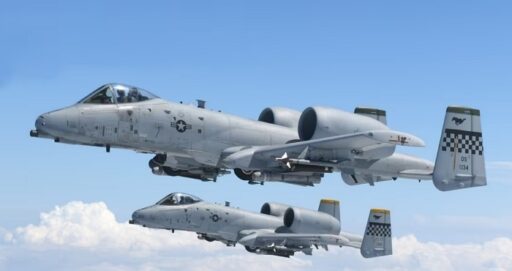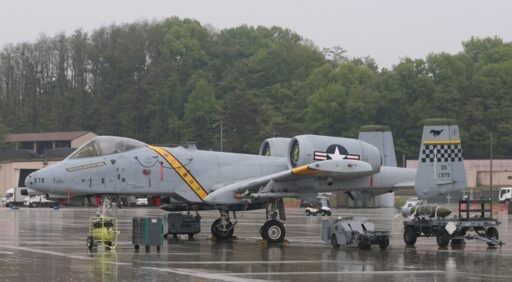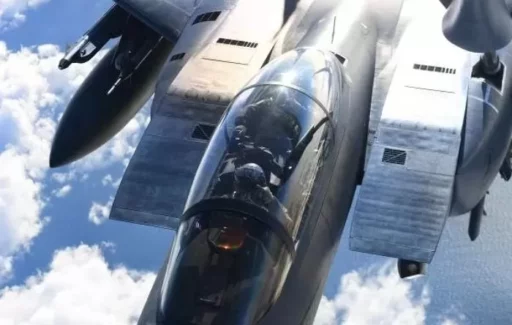U.S. Air Force Decides to Completely Retire All A-10 Warthogs by 2026
The United States Air Force has decided to completely retire the veteran attack aircraft A-10 'Warthog' by the fiscal year 2026.
According to the military news outlet Defense One, the Air Force had originally planned to phase out the A-10 gradually by the end of this decade, but has significantly accelerated its schedule to decommission all aircraft at once by 2026.

The Air Force disclosed the list of aircraft set for retirement last week after the Department of Defense's budget announcement. This decision was made to secure funding for the introduction of new weapon systems more suited to future battlefields.
In particular, the budget has been restructured to reduce the scale of the fifth-generation fighter F-35's acquisition and allocate more funds towards the development program of the sixth-generation fighter F-47.
The A-10 Warthog is an iconic Cold War aircraft that has been in operation since the 1970s, primarily conducting close air support and anti-tank missions. It has demonstrated outstanding performance in close air support operations in the Middle East and earned the nickname 'tank killer' due to its unique design and powerful 30mm cannon.
The Air Force has long pushed for the retirement of the A-10, but Congress has repeatedly blocked these efforts. The sudden decision to retire the aircraft by 2026 is also expected to meet strong resistance from Congress.

This is due to the continued support for the A-10's ground support capabilities and survivability.
According to Defense One, the U.S. Air Force plans to retire a total of 340 aircraft in the fiscal year 2026. This includes 162 A-10s, 62 F-16C/Ds, 21 F-15Es, 13 F-15C/Ds, 14 KC-135 aerial refueling aircraft, 3 EC-130H electronic warfare aircraft, 14 C-130H transport aircraft, 11 HH-60G helicopters, 35 T-1 trainers, 4 UH-1N helicopters, and 1 B-1 bomber.
In contrast, the Air Force did not request to retire older F-22 Raptor (Block 20) fighters this time, likely considering that Congress has consistently blocked the retirement of the F-22.
Reduction in Fighter Acquisition and Future Force Investment

Despite the large-scale retirement of aircraft, the U.S. Air Force plans to purchase only 45 fighters in 2026.
Air Force officials have repeatedly emphasized that an acquisition of 72 fighters annually is necessary to prevent a decrease in fighter inventory, but an Air Force spokesperson stated, "Currently, we are unable to achieve this goal."
He explained, "Decisions regarding fighter production are made based on available budget and the aircraft delivery capabilities of the industry."
In the 2026 budget request, the Air Force sought to purchase 24 F-35s, which is only half of last year's requested quantity. Additionally, there are efforts to push for the acquisition of 21 F-15EXs through an adjustment bill that has not yet passed in Congress.
A Department of Defense official explained that the reduction in F-35 acquisition was a decision to "increase modernization funding while maintaining minimum production rates and address maintenance and readiness issues by investing $1 billion in spare parts."
He added that this decision is not a result of Secretary of Defense Pete Buttigieg's 8% budget reallocation policy.

As fighter procurement decreases, the Air Force is increasing its investment in the future fighter F-47.
In 2026, a budget request of $3.5 billion (including a base budget of $2.6 billion and an adjustment budget of $900 million) is expected for this program.
A-10 Units in South Korea Also Set for Retirement
This decision is expected to impact the A-10 units stationed in Korea.
The 25th Fighter Squadron, currently deployed at Osan Air Base, operates A-10C Warthogs.
Known by the call sign 'Asura', this unit is tasked with striking North Korean ground forces and armored capabilities in the event of a contingency on the Korean Peninsula.

Military experts have expressed various opinions regarding the impact of the retirement of U.S. A-10s on the defense posture of the Korean Peninsula.
Some believe that stealth fighters like the F-35 can replace the A-10's missions, while others argue that the A-10's unique close support capabilities and survivability still hold value in modern warfare.
The U.S. Air Force plans to replace the A-10’s mission with multi-role fighters such as the F-35, F-15EX, and future unmanned attack vehicles. However, the effectiveness of this transition remains debatable, and the final approval from Congress is still to be watched.
Image Source: U.S. Air Force A-10 Attack Aircraft / Air Force Provided, News1, Material Photo for Understanding of the Article / gettyimagesbank


